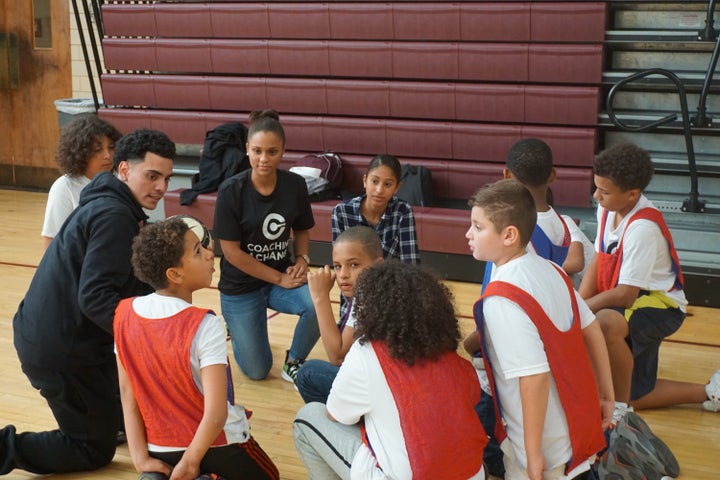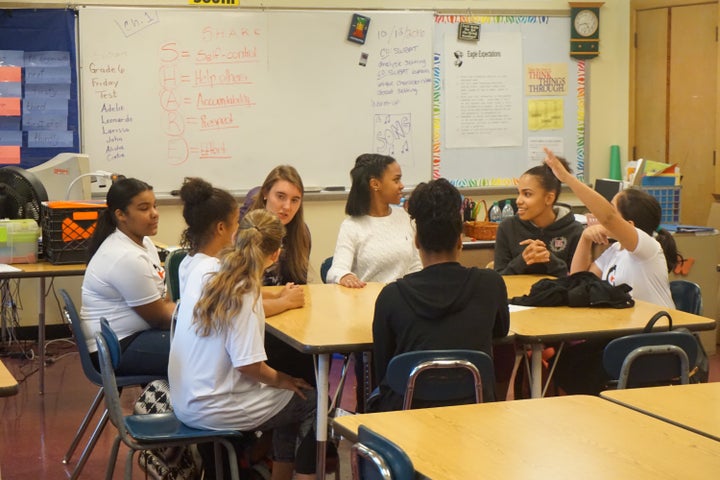During the after school hours, I often find myself in the hallways of a middle school in one of our partnering communities. This is the 4th year that we have partnered directly with various schools as our host sites, and in each of my experiences, I have been disheartened to hear the same conversation. It usually goes like this:
Teacher A: Did you apply for the “Intramural Program” posting? I heard it went up yesterday.
Teacher B: Of course I did. This will be my third year in a row...
Teacher A: How come you keep signing up?
Teacher B: I just pull up a chair in the gym and leave some balls out for the kids. They do the rest (laughs). Easy money
Teacher A: (laughing) I guess I gotta get involved too, huh?
This reality exists at most middle schools and a lot of high schools that have after school programs. When I was a kid, after school programs were more than an “open gym”. After school intramurals was the local sports league for the players who couldn’t make the travel teams. There were coaches and referees, and scheduled game times, and practices. It was often held in a church basement, but it was the best place to be every weekend. It didn’t matter how talented you were, or who your friends were, because you had a team and a jersey and a place where you belonged. Apparently this still exists in the more affluent communities, but that is not where it is needed the most.
Low-income communities across the country are faced with resource inequities. The subsequent results stifle students’ abilities to develop skills that allow them to attain a high school diploma with the necessary social and emotional skills needed to be successful at the next level. Kids born into poverty are far less likely to have meaningful out-of-school-time learning experiences than their middle class peers. By 6th grade, there is a 6,000 hour learning loss. To put this into perspective, 6,000 hours is equivalent to five years in school.
Coaching4Change works with school districts and communities that have strained budgets which causes limited access to physical fitness activities and academic enrichment opportunities.
Coaching4Change (C4C) is a nonprofit organization that provides middle schools with intensive evidence based academic and social-emotional learning programs. We partner with schools to customize after school programs that blend physical activity and project based learning. We deliberately link in-school learning with after school enrichment. Our model pairs struggling middle school students with high school mentors from their community. These students are guided and supervised by local college students and certified teachers.
The core element of our program is a tiered mentoring model for college and high school students to mentor, tutor, and support struggling middle school students through the creation of structured physical activity and hands on projects that develop math and literacy skills with a focus on social and emotional learning. The model works to close the learning gap, but also helps transform school culture from within the school while preparing each of our participants to be successful at the next level.
Our programs go beyond traditional concepts of mentoring, by creating communities within each of our partnering schools that foster ideals like sportsmanship and respect, inclusion, and accountability. Everyone has a role to play, and at the same time is tasked with the responsibility to help those around them play their roles to the best of their ability. Our college students are the referees and general activity facilitators, while the high school students coach with titles of “Encouragement Coach” and “Stats Coach” to keep their middle school mentees engaged, but also make informed game decisions based on the numbers. The middle school student-athletes have an hour each day of structured league games where their job is to put forth their best effort, support their teammates, respect their opponents (and the refs), and improve themselves. Self-improvement is a group activity at C4C as each day the teams set goals for how they would like to see this improvement. It can be as simple as the best player learning to share the ball more to set up successful opportunities for the new players, or for a new player to make sure to run back on defense because there is more to the game than just scoring.
The Coaching4Change after school experience is transformative for all levels of athletes, coaches, and referees. The concept of sport is expanded beyond just a ball and a hoop. The reason we former athletes reminisce about our “glory days” is not because some gym was merely unlocked for us and supervised, it is because we had a team that had our backs and pushed us to improve, and forced us to trust each other, and demanded that we try our best, and encouraged us to go for it when we were scared... and at the end, we became better people. Without these elements, what’s the point?
(Co-author Pete Berman)


